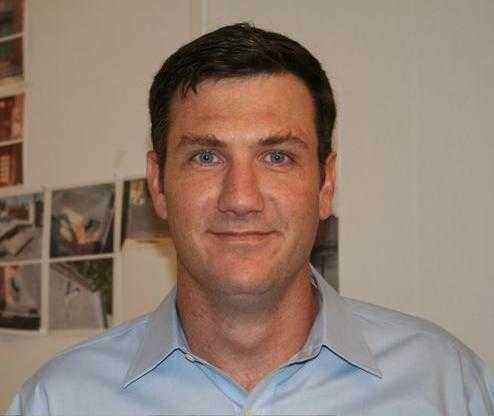Ken Levenson (pictured below) began practicing architecture in 1992. After working at a number of small design firms, he launched his own–called Ken Levenson Architect–in 2001. He was “always professionally interested in sustainability,” but it wasn’t until he discovered the passive-house movement that he made it a cornerstone of his work.
Now Levenson has switched gears. His new company, 475, supplies state-of-the-art, high-performance European building products to the U.S. market.

This Q&A is an edited and condensed version of a conversation with Levenson.
How did you become interested in passive houses?
I was putting together a carbon reduction list for a local civic [group]. I came upon the passive house standard, and it was just like a thunderbolt. They’d boiled it down to a clear methodology that had dramatic energy conservation results, and made sense economically, and in terms of health and comfort — win, win, and win. I basically took the first class I could take [toward] getting certified in it. And I set off to convince my [architectural] clients to do it.
I was very lucky that I managed to land a few clients. They’re financial people on Wall Street; not who you’re picturing as leading to the barricades.
How many passive-house projects did you design?
Four that were built. We’ll get one certified shortly; another one could be, but probably won’t be because no one’s going to pay for it. The other two came up short in some of the metrics. They’re still highly functional, very efficient buildings.
But I stopped taking projects. I couldn’t really find the materials we were looking for. We knew that Europe is 20 years ahead of us, and all this stuff exists, and the expertise exists, in a way that it just doesn’t exist here yet.
So we decided to set off and start a company and bring the products over.
Who’s we?
“We” is myself and my partner Florian Keverling Buisman — a Dutch-trained architect. He had helped me with building science on a particular [architectural] project, a townhouse renovation.
In starting up, we made connections. A lot of the best companies in Europe were so busy in Europe that they hadn’t really considered the American market. We [had] a pedigree of working in this area — even if relatively briefly — and my partner is fluent in German, so this all helps to create a good bond. We struck up a deal with Pro Clima, the main company we’re representing.
And now in addition to Pro Clima [for air-tightness products], the second big product we have is the Lunos E-2. Lunos is also a German product company. It came out last year with a high-efficiency, heat-recovery ventilation system. You install them in pairs, they just go into the wall. There’s no ductwork. It’s great for retrofits.
How long have you been focused on the products company full-time?
A little over a year. It’s tough; it’s incremental for sure. We’re starting to get glimpses of accelerated growth. It’s exciting, but exhausting as well.
What’s demand like in the U.S.? Is there awareness of high-performance building?
Awareness is almost nonexistent. Our core audience is the passive-house group. Beyond that, it’s people building high-performance homes. The keyhole into the market is through architects and consultants. They’re really interested and want to do better buildings.
How do you sell products that usually cost more?
People realize that our products are generally replacing other products they’re already putting in the buildings. There’s minimal amounts of [added] material in relation to the construction.
Our stuff is more expensive, to be sure. But when you put it all together, it’s transformative in terms of how the building can operate.
Passive house buildings average out to a reduction of up to 90 percent in heating and cooling demand. It’s great mechanical savings up front, and operationally you’re saving a ton going forward. It protects against future energy shocks.
What do you think is going to mainstream super-efficient building in the U.S.?
Building codes. People will only build code minimum. But the codes are getting better.
If municipalities adopt [the 2012 International Energy Conservation Code] and don’t gut the provisions, folks would have to do a blower-door test. It would really be a big step in the right direction. If the code changed, that would change everything.
Ken Levenson, AIA, CPHD is the CFO and Sales Director of 475. He graduated from Pratt Institute in 1989 and has been a registered architect in New York State since 1993. Ken is a Certified Passive House Designer, a founding board member of the National Passive House Alliance and of New York Passive House. Ken regularly lectures on the Passive House standard.